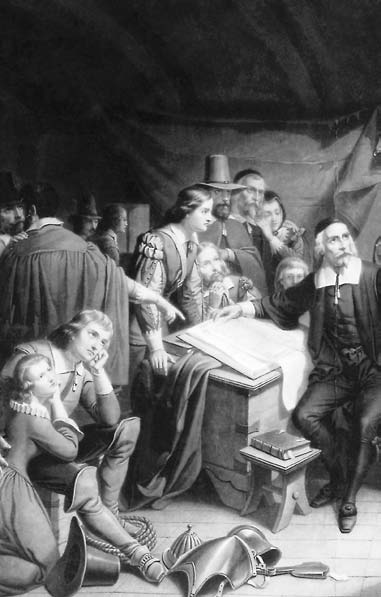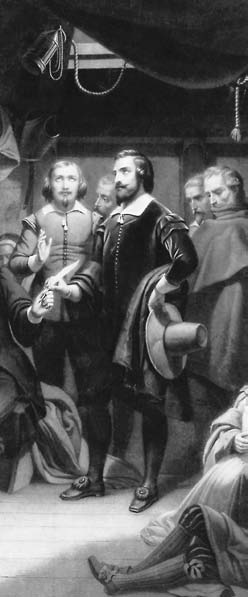CHAPTER 1: EARLY AMERICA
THE ENDURING MYSTERY OF THE ANASAZI
Time-worn pueblos and dramatic cliff towns, set amid the stark, rugged mesas and canyons of Colorado and New Mexico, mark the settlements of some of
the earliest inhabitants of North America, the Anasazi (a Navajo word meaning
“ancient ones”).
By 500 A.D. the Anasazi had established some of the first villages in
the American Southwest, where they hunted and grew crops of corn, squash,
and beans. The Anasazi flourished over the centuries, developing sophisticated dams and irrigation systems; creating a masterful, distinctive pottery tradition; and carving multiroom dwellings into the sheer sides of cliffs that remain among the most striking archaeological sites in the United States today.
Yet by the year 1300, they had abandoned their settlements, leaving their
pottery, implements, even clothing — as though they intended to return — and
seemingly vanished into history. Their homeland remained empty of human
beings for more than a century — until the arrival of new tribes, such as the
Navajo and the Ute, followed by the Spanish and other European settlers.
The story of the Anasazi is tied inextricably to the beautiful but harsh
environment in which they chose to live. Early settlements, consisting of simple pithouses scooped out of the ground, evolved into sunken kivas (underground
rooms) that served as meeting and religious sites. Later generations developed the masonry techniques for building square, stone pueblos. But the most dramatic change in Anasazi living was the move to the cliff sides below the flat-
topped mesas, where the Anasazi carved their amazing, multilevel dwellings.
The Anasazi lived in a communal society. They traded with other peoples
in the region, but signs of warfare are few and isolated. And although the Anasazi certainly had religious and other leaders, as well as skilled artisans, social or class distinctions were virtually nonexistent.
Religious and social motives undoubtedly played a part in the building
of the cliff communities and their final abandonment. But the struggle to raise food in an increasingly difficult environment was probably the paramount factor. As populations grew, farmers planted larger areas on the mesas, causing
some communities to farm marginal lands, while others left the mesa tops for
the cliffs. But the Anasazi couldn’t halt the steady loss of the land’s fertility from constant use, nor withstand the region’s cyclical droughts. Analysis of tree rings, for example, shows that a drought lasting 23 years, from 1276 to 1299,
finally forced the last groups of Anasazi to leave permanently.
Although the Anasazi dispersed from their ancestral homeland, their
legacy remains in the remarkable archaeological record that they left behind,
and in the Hopi, Zuni, and other Pueblo peoples who are their descendants.
20

OUTLINE OF U.S. HISTORY
0.
-130
. 500.D
s, Angpiou
l grratu
culanic
merA
tive
r Najo
Ma
21

22

C H A P T E R
2THE
COLONIAL
PERIOD
Pilgrims signing the
Mayflower Compact
aboard ship, 1620.






